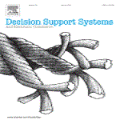
Eosinophilic esophagitis (EoE) is a chronic allergic inflammatory condition of the esophagus associated with elevated esophageal eosinophils. Second only to gastroesophageal reflux disease, EoE is one of the leading causes of chronic refractory dysphagia in adults and children. EoE diagnosis requires enumerating the density of esophageal eosinophils in esophageal biopsies, a somewhat subjective task that is time-consuming, thus reducing the ability to process the complex tissue structure. Previous artificial intelligence (AI) approaches that aimed to improve histology-based diagnosis focused on recapitulating identification and quantification of the area of maximal eosinophil density. However, this metric does not account for the distribution of eosinophils or other histological features, over the whole slide image. Here, we developed an artificial intelligence platform that infers local and spatial biomarkers based on semantic segmentation of intact eosinophils and basal zone distributions. Besides the maximal density of eosinophils (referred to as Peak Eosinophil Count [PEC]) and a maximal basal zone fraction, we identify two additional metrics that reflect the distribution of eosinophils and basal zone fractions. This approach enables a decision support system that predicts EoE activity and classifies the histological severity of EoE patients. We utilized a cohort that includes 1066 biopsy slides from 400 subjects to validate the system's performance and achieved a histological severity classification accuracy of 86.70%, sensitivity of 84.50%, and specificity of 90.09%. Our approach highlights the importance of systematically analyzing the distribution of biopsy features over the entire slide and paves the way towards a personalized decision support system that will assist not only in counting cells but can also potentially improve diagnosis and provide treatment prediction.
翻译:骨髓炎(EoE)是一种与高食道和骨质细胞相关的食道病的慢性过敏性急性病。第二,仅次于食道复发性疾病,EoE是成人和儿童慢性骨质炎发作的主要原因之一。EoE诊断需要将食道生物细胞中食道性骨细胞的密度计算在内,这是一个有点主观性的任务,需要花费时间,从而降低处理复杂组织结构的能力。以前旨在改进基于直肠的诊断的人工智能(AI)方法,重点是对最大骨质复发性复发性疾病地区进行再综合识别和量化。然而,这一指标并没有说明在整个幻灯片图像中,食道性细胞细胞细胞细胞细胞细胞细胞细胞的密度。我们开发了一个人工智能平台,仅将地方和空间生物方法的精度分解能力推导出,从而降低了复杂的组织结构结构的处理能力。以前,旨在改进基于直系肝脏细胞细胞细胞病和脊椎系的精确性诊断方法的精确性诊断方法,而不是基于血蛋白的直系的直径50和直系流流流流流传的浓度,此外,我们的血细胞细胞病细胞细胞病病系的血分解能和血细胞病分解系统也得以实现了肝脏病细胞细胞细胞细胞细胞病分解。


